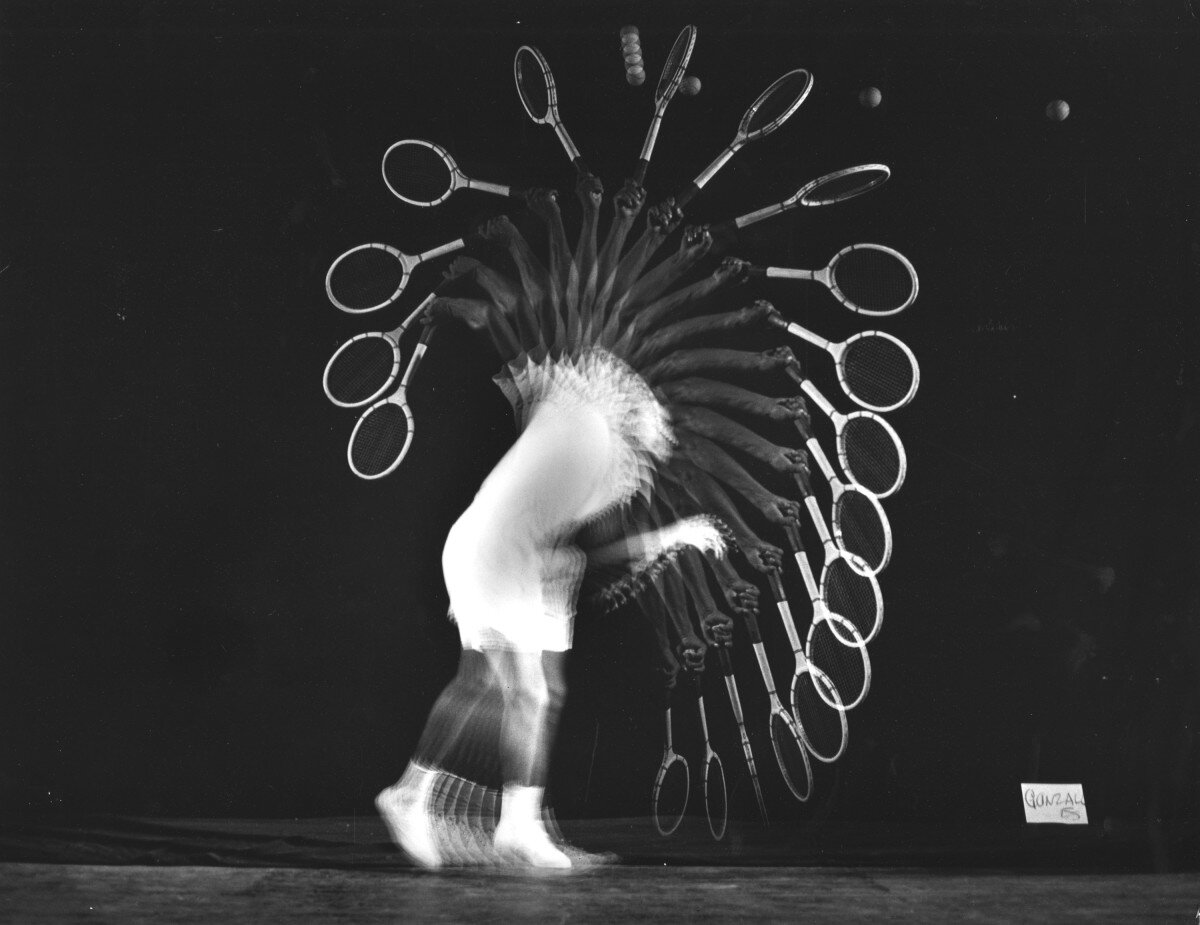Newclear (series), silver gelatin prints, 2017. ACE Open, Adelaide, 2021. Photographer: Josh Geelan
Newclear (2017) is a photographic series that repurposes film footage recorded during nuclear weapons tests. The series reflects upon the intrinsic role photography has played in the development and proliferation of atomic weapons. Using traditional darkroom methods combined with a custom-built robotic exposure device, documented detonations are exposed to light-sensitive paper to record a timeline of events. Each vertical slice of the image registers an individual frame of the source footage — tracking from left to right — to capture a suspended pre and post-nuclear world.
These four images focus on the destruction of buildings during the American nuclear test Apple-II on May 5, 1955. Unlike the tests that came before it, Apple-II was uniquely formulated by the American Department of Defense to produce evocative photographic footage ‘useful for imparting to the American public the message of Civil Defense.’ Typical American-style residences and public utilities were built on the barren Nevada test site, constructing a simulation of prototypical suburban life. Inhabited by life-sized mannequins resembling the American nuclear family, this mock civilisation became colloquially known as ‘survival town.’ The footage, disseminated in the film Operation Cue (1955), conveyed the horrors that awaited the American public in a post-nuclear world, concluding with DoD officials walking through the rubble of the mock American dystopia.
Fig.1 Preliminary objectives for nuclear test Operation Teapot Apple-II outlining photography as a useful tool for imparting a message of civil defence, May 1955.
Fig. 3 Trinity Test photograph .053 Seconds, July 16, 1945.
Fig. 2 Stereoscopic photograph Pancho Gonzales Serves, Harold Edgerton, 1949.
Fig. 4 Civil Defence workers at 'Survival Town' hold a photo of the 'Paul Darling' home before it was destroyed, May 9, 1955.
Fig. 5 Milkdrop Coronet by photographer Harold Edgerton creator of the first nuclear detonation device, 1957.






